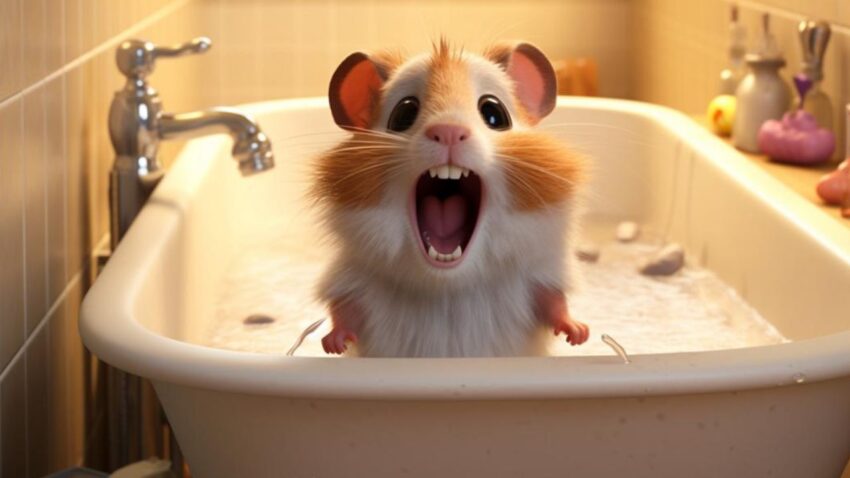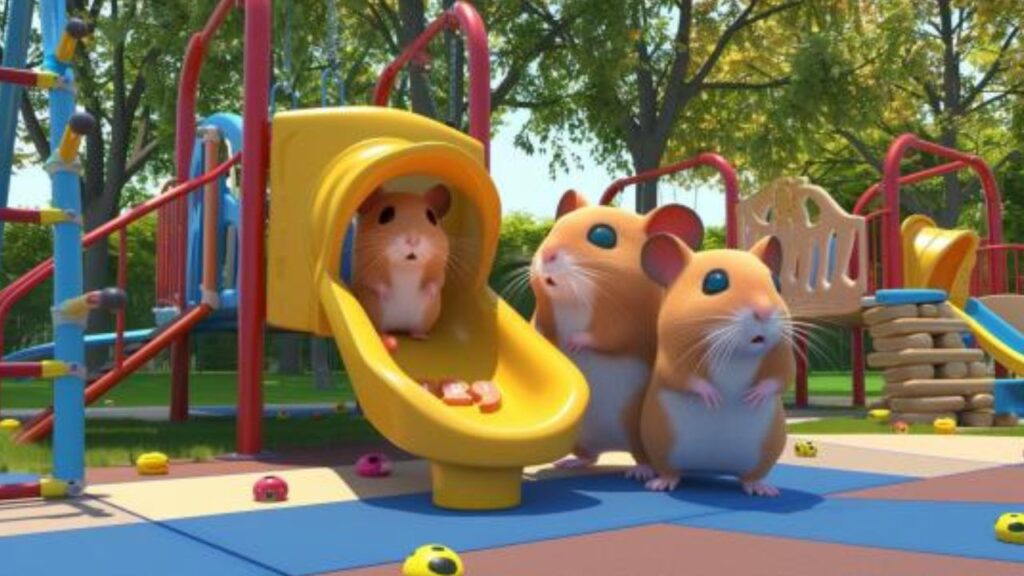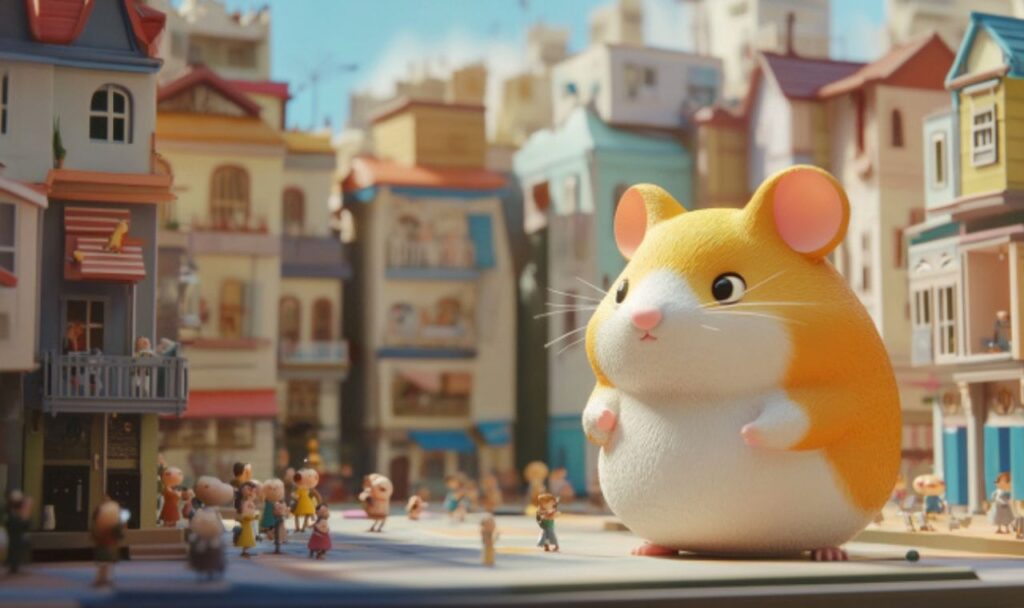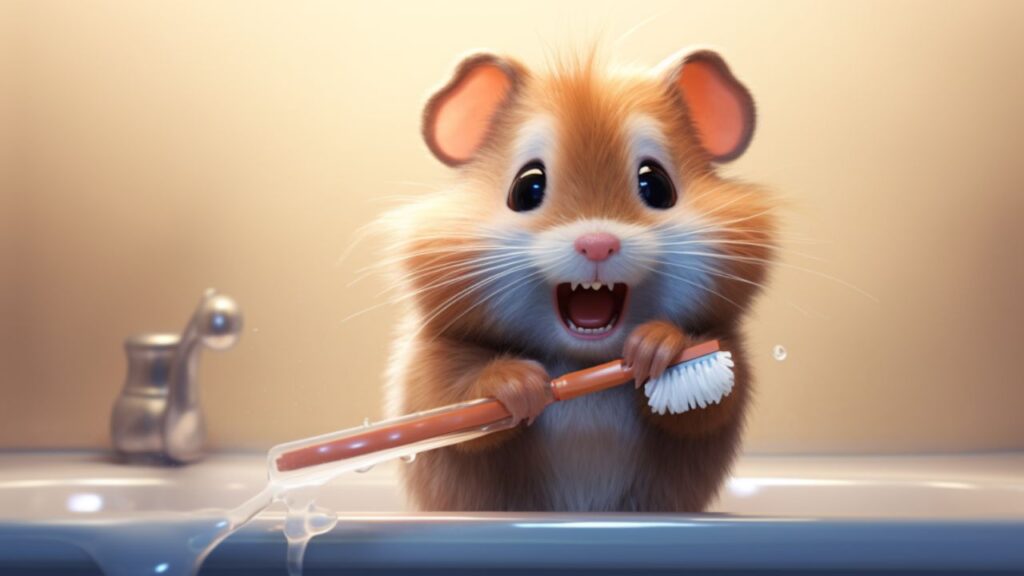As an experienced veterinarian and a passionate hamster advocate, I’ve spent years observing these delightful little creatures and understanding their needs. One of the most overlooked aspects of hamster care is dental health. In this article, we’ll delve into the fascinating world of hamster dental care, focusing on the critical role of chew toys. We’ll explore the basics of hamster dental health, understand why chew toys are not just a luxury but a necessity, and provide an overview of what you’ll discover in this article.
The Basics of Hamster Dental Health
Hamsters, like many rodents, have a unique dental composition. Their incisors, the front teeth, grow continuously throughout their life. This growth is not a flaw but a feature of their design, enabling them to gnaw on various materials. In the wild, this trait is essential for survival. However, in the comfort of a cage, without proper care, this can lead to overgrown teeth, causing discomfort or even health issues. It’s crucial to ensure these teeth are kept at a healthy length through natural wearing processes.
Why Chew Toys Are Essential
This is where chew toys come into play. Chew toys are not just about entertainment; they are a fundamental part of your hamster’s dental care regimen. By gnawing on these toys, hamsters can naturally grind down their teeth, preventing overgrowth and associated complications. Moreover, chew toys also serve as an essential outlet for their natural gnawing behavior, keeping them engaged and mentally stimulated. Ignoring this need can lead to not only dental issues but also behavioral problems as your hamster seeks other ways to satisfy their gnawing instinct.
Overview of the Article
Throughout this article, we’ll explore the different types of chew toys available for hamsters, their benefits, and how to choose and introduce them to your furry friend’s routine. From wooden chew toys to edible treats, we’ll cover the spectrum to help you make informed decisions. We’ll also dive into the signs of dental problems and how chew toys can prevent these issues. My ‘Whisker Tips’ will offer practical advice on maintaining your hamster’s dental health through these toys. So, let’s embark on this journey to ensure our hamsters have the happiest and healthiest smiles!
Understanding Hamster Teeth

Delving into the world of hamster dental care, it’s vital to first understand the anatomy of their teeth, how they grow, and the potential issues that can arise. This understanding forms the foundation for effective preventive care, ensuring our little friends lead comfortable, healthy lives.
The Anatomy of Hamster Teeth
Hamsters possess two sets of incisors – one set in the upper jaw and another in the lower. These incisors are the primary teeth used for gnawing and are quite remarkable. Unlike human teeth, hamster incisors lack roots that signal when to stop growing. As a result, these teeth continuously grow throughout a hamster’s life at a rate of about 0.8 to 1.3 mm per week. The enamel on the front of the teeth is harder and darker than the back, which aids in self-sharpening as they gnaw.
Growth and Dental Issues
This perpetual growth is both a blessing and a potential curse. In the wild, the constant gnawing on hard materials naturally keeps their teeth at a healthy length. In captivity, however, the lack of hard materials can lead to overgrowth. Overgrown teeth can curve and grow into the hamster’s mouth or jaw, causing pain, difficulty eating, or even abscesses. Furthermore, misalignment, known as malocclusion, can occur due to genetics, injury, or improper wear, leading to similar problems.
Signs of Dental Problems
Recognizing the signs of dental issues in hamsters is crucial for early intervention. Symptoms can include a lack of appetite, drooling, weight loss, and visible changes in tooth length or alignment. Additionally, a hamster may show changes in behavior, such as reduced activity or reluctance to chew. Regular observation and understanding your hamster’s normal eating and chewing habits are essential in spotting these signs early.
In the following sections, we’ll explore how chew toys play an indispensable role in preventing these dental problems, ensuring our hamsters remain not just happy, but also healthy. As we delve deeper, keep in mind that proactive dental care is a key component of responsible hamster ownership.
Types of Hamster Chew Toys
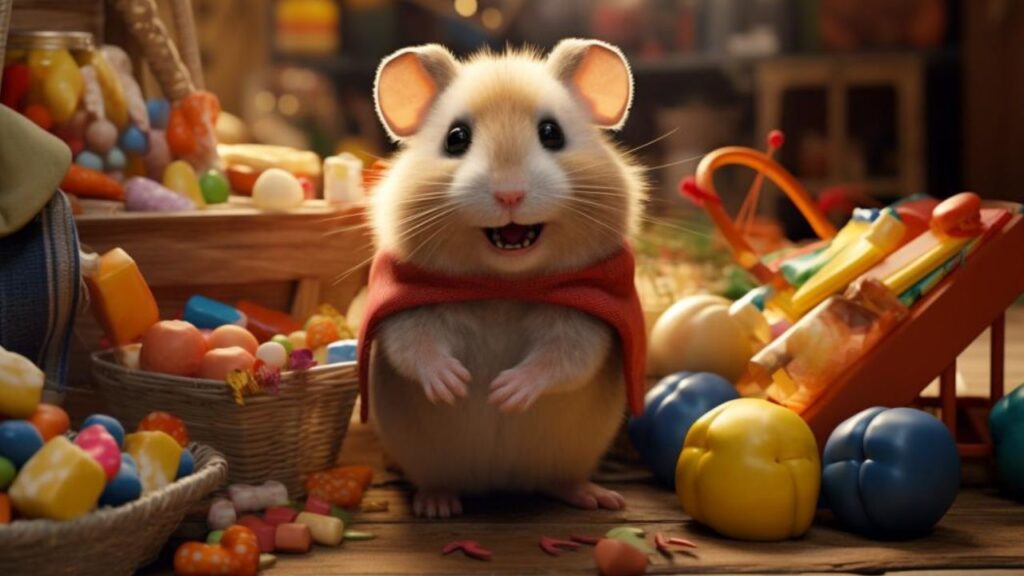
As a dedicated hamster caregiver, one of the most enjoyable aspects of hamster care is selecting the right chew toys. There’s a delightful variety available, each serving the purpose of keeping those ever-growing teeth in check. Let’s explore the different types of chew toys you can offer your furry friend, from store-bought options to creative DIY ideas.
Wooden Chew Toys
Wooden chew toys are a staple in the hamster world. They are durable, safe, and mimic the natural materials a hamster would gnaw on in the wild. When selecting wooden toys, ensure they are untreated and free from harmful chemicals. Applewood sticks, bamboo chews, and wooden blocks specifically designed for rodents are excellent choices. These toys not only help with dental wear but also provide physical enrichment, encouraging natural gnawing behavior.
Always check that the wood is safe for hamsters. Avoid woods like cedar and pine, which can be harmful.
Edible Chew Treats
Edible chews are a delectable way to maintain your hamster’s dental health while also offering a tasty treat. These can include chew sticks covered in seeds or herbs, mineral chews, and shaped treats made from hay. They serve a dual purpose – promoting dental health and providing nutritional benefits. However, it’s essential to offer these in moderation as part of a balanced diet.
Rotate different types of edible treats to keep your hamster’s diet varied and interesting.
DIY Chew Toy Ideas
For those who love a bit of creativity, making your own chew toys can be a fun and rewarding experience. Use safe, untreated wood to create custom shapes and structures. Cardboard, free from ink and adhesives, can also be fashioned into chewable toys. You can even thread untreated wooden beads onto a safe string to make a hanging toy. DIY toys not only provide dental benefits but also allow you to personalize your hamster’s environment.
Ensure all materials used in DIY toys are safe and non-toxic to hamsters. When in doubt, stick to materials you know are hamster-safe.
In conclusion, a variety of chew toys, from wooden chews to DIY creations, play a crucial role in your hamster’s dental and overall health. Experiment with different types to see what your hamster prefers, and remember to regularly inspect and replace these toys to keep them safe and effective.
Benefits of Chew Toys for Hamsters
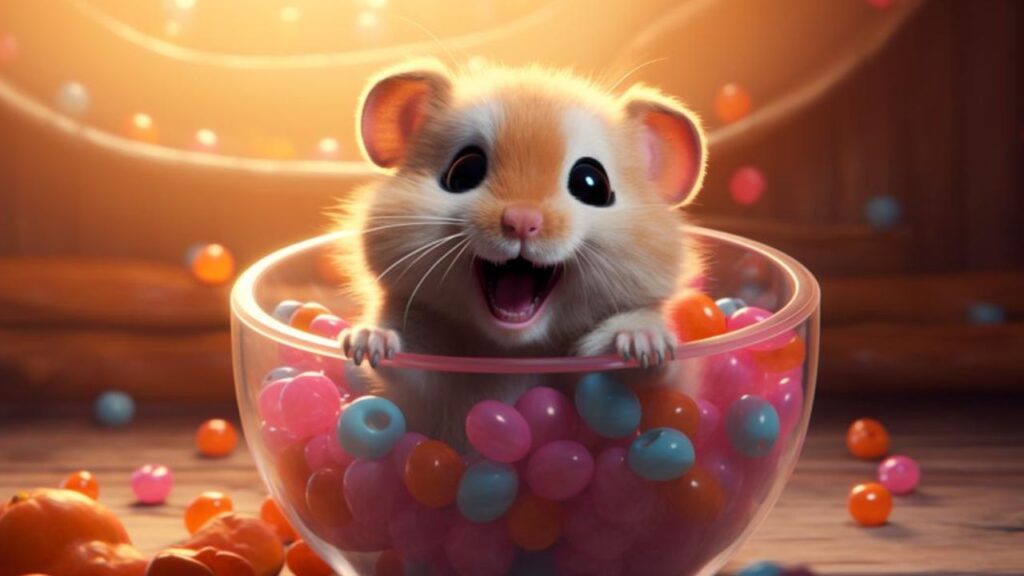
Chew toys are more than just playthings for our furry companions; they are vital tools for maintaining their overall well-being. Understanding the multifaceted benefits of chew toys can help us appreciate their importance in our hamsters’ lives. Let’s delve into the significant advantages they offer, from dental health to mental stimulation.
Preventing Overgrown Teeth
The primary benefit of chew toys is preventing the overgrowth of teeth. As we’ve discussed, a hamster’s teeth grow continuously, and chew toys provide the necessary resistance to wear them down at a natural rate. This mimics the natural gnawing behavior hamsters would exhibit in the wild, where they constantly chew on hard materials like wood and seeds. Regular use of chew toys ensures that the length and shape of their teeth are maintained, preventing a host of dental issues.
Offer a variety of chew toys to keep your hamster’s interest and ensure even wear of their teeth.
Behavioral and Mental Health
Chew toys also play a crucial role in your hamster’s behavioral and mental health. Gnawing is a natural and instinctive behavior for hamsters, and providing appropriate items to chew on can prevent boredom and stress. When hamsters are deprived of chew toys, they may start chewing on their cage bars or other inappropriate items, which can be harmful. Chew toys keep them engaged, provide mental stimulation, and satisfy their innate gnawing instinct, contributing to a happier and more content pet.
Observe your hamster’s behavior with different toys to understand their preferences and keep them mentally stimulated.
Dental Disease Prevention
Regular use of chew toys can help in preventing dental diseases, which are common in pet hamsters. Overgrown teeth can lead to difficulty eating, malnutrition, or even injuries inside the mouth. Providing appropriate chew toys helps in maintaining proper dental health, thereby reducing the risk of dental diseases and the associated complications like infections or abscesses.
Regularly check your hamster’s teeth for signs of overgrowth or abnormal wear, and consult a veterinarian if you notice any issues.
In summary, the benefits of chew toys in a hamster’s life are extensive. They are essential not only for dental health but also for mental well-being and behavioral enrichment. By incorporating a variety of chew toys into your hamster’s environment, you are taking a significant step in ensuring their health and happiness.
Choosing the Right Chew Toys
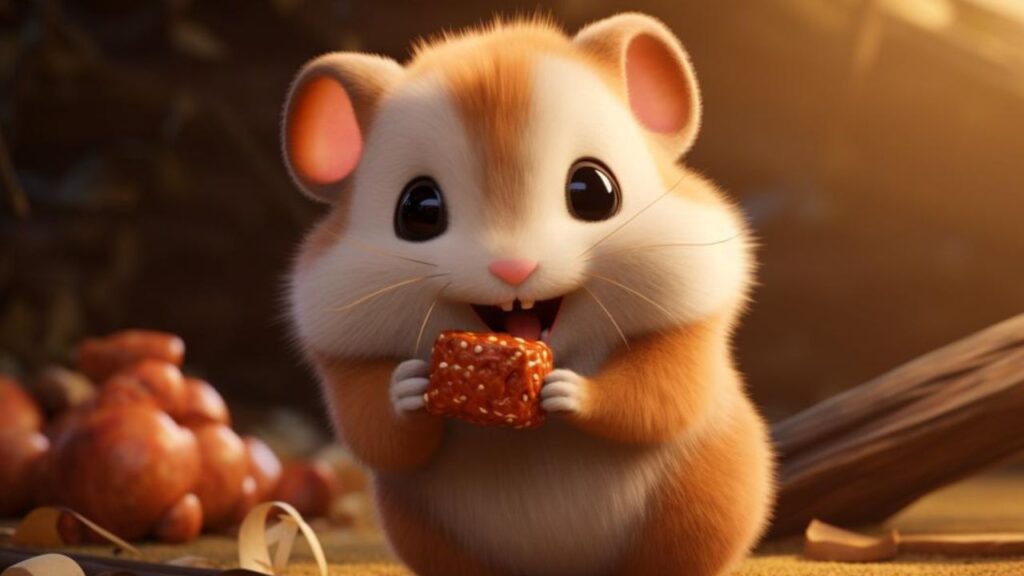
Selecting the ideal chew toys for your hamster is not just about picking the cutest or most colorful options. It involves considering several important factors to ensure the toys are safe, appropriate, and engaging for your little friend. Let’s explore the key aspects to consider when choosing the right chew toys for your hamster.
Safety Considerations
Safety is paramount when it comes to anything your hamster will be gnawing on. The first rule is to avoid anything with sharp edges or small parts that could become choking hazards. Also, steer clear of toys treated with chemicals, paints, or varnishes, as these can be toxic to hamsters. It’s essential to regularly inspect the toys for signs of wear and tear, replacing them before they become dangerous.
Always purchase chew toys from reputable pet stores or sources known for safe and quality products specifically designed for small animals.
Size and Material
The size of the chew toy should be appropriate for your hamster. It should be large enough to be interesting and engaging, but not so big that it becomes intimidating or difficult to use. The material of the chew toy is equally important. Natural woods (like applewood or bamboo) are excellent, as are toys made from hay or vegetable-based materials. Avoid plastic toys, as they can harm your hamster if ingested.
Check the hardness of the wood. It should be hard enough to provide a good gnawing experience, but not so hard that it damages your hamster’s teeth.
Variety and Interest
Just like us, hamsters can get bored with the same old toys. Offering a variety of chew toys keeps things interesting and encourages them to chew more, which is better for their dental health. You can rotate different types of toys – like wooden blocks, hay cubes, and woven grass toys – to maintain their interest. Also, consider the toy’s ability to engage your hamster in different ways, such as hanging toys that sway or toys that can be pushed and rolled around.
Observe which types of toys your hamster prefers and which ones they ignore. This can guide you in choosing the best toys for their individual preference.
In conclusion, choosing the right chew toys for your hamster involves careful consideration of safety, size, material, and variety. By providing a range of appropriate and engaging chew toys, you’re not just promoting dental health; you’re enhancing your hamster’s overall quality of life.
Incorporating Chew Toys in Your Hamster’s Routine
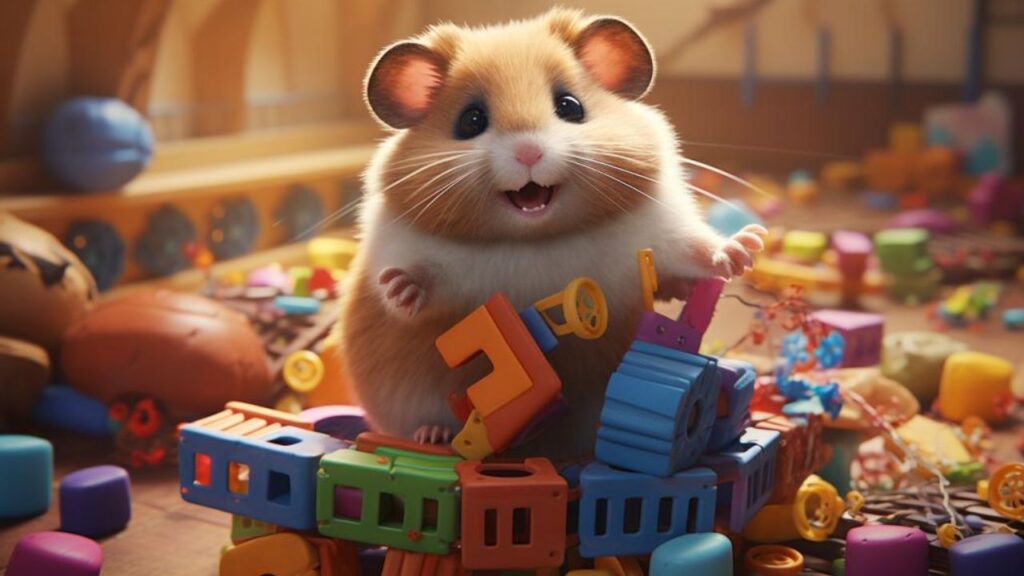
Introducing chew toys into your hamster’s environment is more than just scattering them randomly in their cage. It’s about thoughtful placement, regular rotation, and close observation of how they interact with these toys. Let’s delve into the best practices for integrating chew toys into your hamster’s daily routine.
Placement in the Cage
The placement of chew toys in the cage can significantly impact how often and enthusiastically your hamster uses them. Position some toys near their sleeping area, as hamsters often like to chew when they wake up. Others can be placed near their food area or along their usual paths. For hanging toys, ensure they are within easy reach and not too high. The goal is to make these toys accessible and inviting.
Try placing chew toys near areas where your hamster spends most of their time to encourage frequent use.
Rotation and Renewal of Toys
Just like us, hamsters can become bored with the same old toys. Rotating their toys every week or so can keep their environment stimulating and engaging. It also prevents over-familiarity, which might reduce the effectiveness of the toys in encouraging chewing. Moreover, regular renewal of chew toys is important. Once a toy shows significant wear or damage, it’s time to replace it to maintain safety and interest.
Keep a small collection of chew toys so you can easily rotate them in and out of your hamster’s cage.
Monitoring Your Hamster’s Use
Observation is key in understanding your hamster’s preferences and ensuring they are benefiting from their chew toys. Notice which toys they prefer and how they interact with different types. This can guide you in selecting future toys. Also, monitor the condition of the toys for any signs of excessive wear or potential hazards. If a toy is not being used at all, consider its placement or swap it out for a different type.
If a toy is consistently ignored, try changing its position in the cage or replacing it with a different style to spark your hamster’s interest.
Incorporating chew toys effectively into your hamster’s routine is a dynamic process. It requires observing your pet’s behavior, rotating the toys to maintain interest, and ensuring their placement in the cage encourages regular use. By following these guidelines, you can create an enriching and healthy environment for your furry friend.
Whisker Tips: Practical Advice

In the delightful journey of hamster care, providing the best for our furry companions includes understanding the nuances of their needs, especially when it comes to chew toys. Here are my ‘Whisker Tips’ – practical advice for hamster parents to ensure your little ones get the most out of their chew toys.
Frequency of Chew Toy Replacement
A key aspect of chew toy maintenance is knowing when to replace them. Generally, chew toys should be replaced when they become too small, excessively worn, or potentially unsafe. This can vary depending on the material and your hamster’s chewing habits. As a rule of thumb, inspect chew toys weekly and replace them as needed. Keeping a regular check ensures that your hamster always has safe and effective toys to gnaw on.
Whisker Tip:
Always have a spare set of your hamster’s favorite chew toys on hand for quick replacement.
Observing Your Hamster’s Preferences
Each hamster has its unique personality and preferences. Some may prefer wooden chews, while others might gravitate towards edible treats or hanging toys. Spend time observing which toys your hamster uses most and least. This observation will guide you in choosing toys that will be most beneficial and enjoyable for your specific pet. Remember, what works for one hamster might not be as appealing to another.
Whisker Tip:
Try offering a variety of toy types initially to gauge your hamster’s preferences, then tailor your selections accordingly.
Introducing New Chew Toys
Introducing new chew toys can be an exciting time for both you and your hamster. When presenting a new toy, place it in an area of the cage that your hamster frequents. Sometimes, hamsters may be hesitant with new items. Give them time to explore and get accustomed to the new addition. If the toy is ignored for an extended period, try repositioning it within the cage or pairing it with a familiar item to spark interest.
Whisker Tip:
Introduce new toys gradually, especially if your hamster seems overwhelmed or uninterested at first.
By keeping these ‘Whisker Tips’ in mind, you can ensure a fulfilling and health-promoting environment for your beloved hamster. Remember, the goal is to provide a variety of safe, engaging, and appropriate chew toys to cater to your hamster’s natural behaviors and preferences.
Wrapping Up: A Healthy Bite on Hamster Care

As we come to the end of our exploration into the world of hamster chew toys, let’s take a moment to summarize the key points and reaffirm our commitment to responsible pet care. Ensuring the dental and overall well-being of our hamster friends is a delightful responsibility that comes with its own set of joys and challenges.
Summary of Key Points
- Hamster Dental Health: Remember, a hamster’s teeth grow continuously, necessitating the need for chew toys to prevent overgrowth and dental issues.
- Types of Chew Toys: There’s a variety of chew toys available, including wooden chew toys, edible treats, and DIY options. Each type offers unique benefits and caters to different aspects of your hamster’s health and well-being.
- Benefits of Chew Toys: These toys are essential not just for dental health but also for mental stimulation and preventing behavioral issues.
- Choosing the Right Toys: When selecting chew toys, consider safety, size, material, and variety to keep your hamster engaged and healthy.
- Incorporating Toys in Routine: Proper placement, rotation, and monitoring of chew toys in your hamster’s cage are vital to encourage regular use and maintain interest.
- Whisker Tips: Regular replacement of toys, observing your hamster’s preferences, and correctly introducing new chew toys are key to ensuring your hamster’s happiness and health.
Encouragement for Responsible Pet Care
As hamster enthusiasts and caregivers, our primary goal is to provide a nurturing and stimulating environment for our furry companions. This includes understanding their unique needs and behaviors, especially when it comes to dental care. Let’s continue to learn about, invest in, and cherish these delightful creatures. By doing so, we ensure not just their well-being but also enrich our lives with their charming presence.
So, as we conclude this insightful journey into the world of hamster chew toys, let’s carry forward the knowledge and tips we’ve shared. And remember, in the delightful world of hamster care, every small step we take makes a big difference in their lives.
“Remember, a happy hamster is a wheel-y happy you!”

